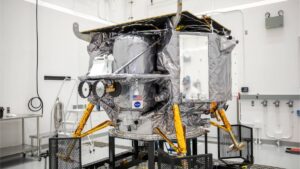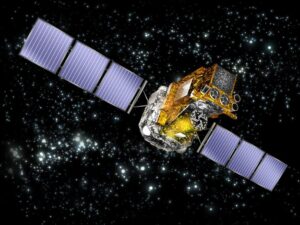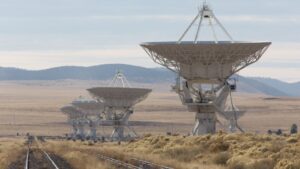
ORLANDO, Fla. — Intelsat 33e’s break-up in geostationary orbit (GEO) highlights an emerging threat for the contested space domain, an executive at U.S.-based space-tracking company ExoAnalytic Solutions said Dec. 10 during the Spacepower Conference here.
Clint Clark, ExoAnalytic Solutions chief growth officer and vice president of first impressions, said the company has identified a cloud of more than 700 pieces of debris following the Oct. 19 incident.
ExoAnalytic Solutions identified 57 pieces of debris in the days following the break-up, ranging from fragments the size of a softball to those the size of a car door. About week later, the number had risen to around 500.
“If that happened and you were planning for it as a bad guy, you could deploy anything you wanted at GEO in the noise that created,” Clark warned, “and you’re gone, you are hidden” from view.
Boeing is still investigating what caused the second in a series of four EpicNG (next-generation) high throughput satellites it built for Intelsat to break up in orbit.
Intelsat-29e, the first in the series, was declared a total loss in 2019 after what the companies said was either a meteoroid impact or a wiring flaw.
Clark declined to comment on how adversaries could exploit the additional noise created from an event like Intelsat 33e’s demise on the conference’s sidelines.
However, during a panel on emerging threats in space, he pointed to growing Chinese capabilities, including what have become routine maneuvers and close-up inspections of other satellites in geostationary orbit.
“China doesn’t sit still,” he said. “They’re all over the sky.”
ExoAnalytic Solutions has also tracked “China practicing tactics that look like … direct-ascent threats to GEO,” he added.
Speaking on the same panel, Chief Master Sgt. Ronald Lerch, senior enlisted leader at the Space Systems Command’s intelligence directorate, noted how the number of Chinese satellites has also grown from 36 in 2010 to more than a thousand.
“Norm-shattering behaviors have been enabled because of their ability to have space and what that’s able to offer their capabilities and their forces,” Lerch said, pointing to China’s increasing encroachment in Taiwan.
Meanwhile, the danger Intelsat-33e debris poses other spacecraft in orbit has greatly reduced over the last few months, Clark told SpaceNews, even as ExoAnalytic Solutions continues to find more debris with its network of ground-based telescopes.
He said the number of collision alerts the company sends out has stabilized to normal levels after spiking more than four times soon after the incident.
The post Intelsat 33e demise exposes vulnerabilities in the space domain appeared first on SNN.




